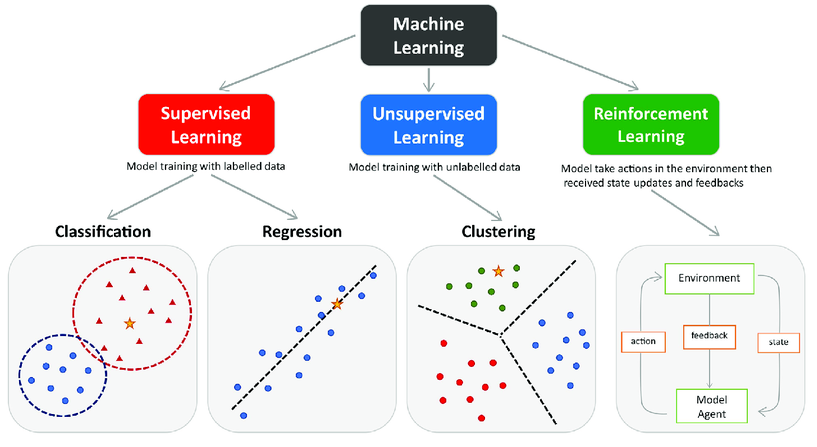Exploring Types of Machine Learning
 Prakhar Kumar
Prakhar Kumar
Machine learning (ML) encompasses various approaches to solving complex problems by learning patterns from data. Understanding the subtypes within each primary type of machine learning—supervised learning, unsupervised learning, and reinforcement learning—along with real-world examples, is crucial for grasping their practical applications. Let's delve deeper into each subtype with illustrative examples for new tech users.
1. Supervised Learning Subtypes
a. Classification
Classification is a subtype of supervised learning where the model predicts discrete class labels based on input features. It's commonly used in applications involving categorization or decision-making.
Real-World Example:
- Spam Email Detection: Classifying emails as spam or non-spam based on features like sender, subject, and content. The model learns from labeled data where emails are categorized as spam or non-spam.
b. Regression
Regression is another supervised learning subtype focused on predicting continuous numerical values. It's utilized in scenarios requiring estimation or forecasting.
Real-World Example:
- House Price Prediction: Predicting the selling price of houses based on features like size, location, number of rooms, and amenities. The model learns from historical data with house prices as continuous values.
2. Unsupervised Learning Subtypes
a. Clustering
Clustering is a subtype of unsupervised learning used to group similar data points into clusters based on their inherent patterns or similarities.
Real-World Example:
- Customer Segmentation: Identifying distinct customer segments based on purchase behavior, demographics, and preferences. The model clusters customers into groups for targeted marketing strategies.
b. Dimensionality Reduction
Dimensionality reduction aims to reduce the number of features or variables in a dataset while retaining essential information and patterns.
Real-World Example:
- Feature Selection for Credit Scoring: Selecting the most relevant features (e.g., income, credit history, debt-to-income ratio) for predicting creditworthiness. The model reduces dimensionality for more efficient and accurate credit scoring.
3. Reinforcement Learning Subtypes
a. Model-Based Reinforcement Learning
Model-based reinforcement learning involves learning an explicit model of the environment to make decisions and optimize rewards.
Real-World Example:
- Autonomous Driving: Training an AI agent to navigate complex road environments by learning a model of traffic rules, obstacles, and safe driving behaviors. The agent optimizes actions to reach destinations efficiently and safely.
b. Model-Free Reinforcement Learning
Model-free reinforcement learning focuses on directly learning optimal policies or behaviors without explicitly modeling the environment.
Real-World Example:
- Game Playing (e.g., AlphaGo): Teaching an AI to play strategic games like Go or chess by directly learning optimal moves and strategies through trial and error. The AI agent improves its gameplay over time by maximizing rewards and minimizing losses.
Conclusion
Understanding the subtypes within supervised learning, unsupervised learning, and reinforcement learning provides a comprehensive view of the diverse applications of machine learning. From classifying emails and predicting house prices to clustering customers and training autonomous agents, machine learning subtypes empower various real-world use cases, making them accessible and impactful for new tech users.
Subscribe to my newsletter
Read articles from Prakhar Kumar directly inside your inbox. Subscribe to the newsletter, and don't miss out.
Written by
